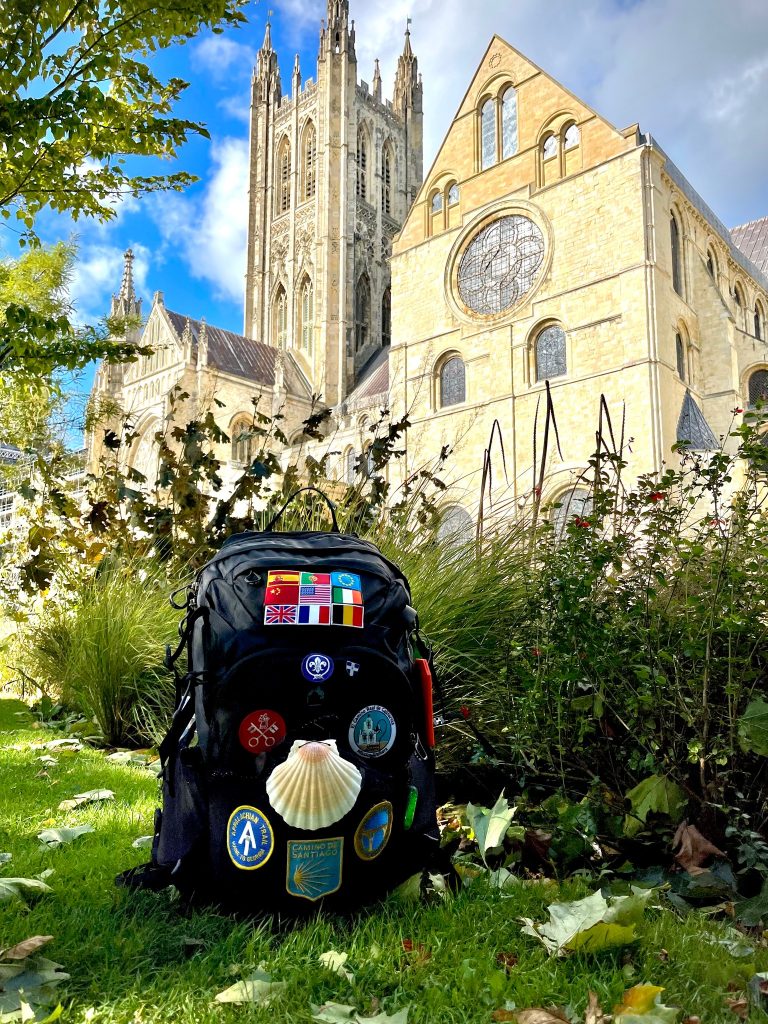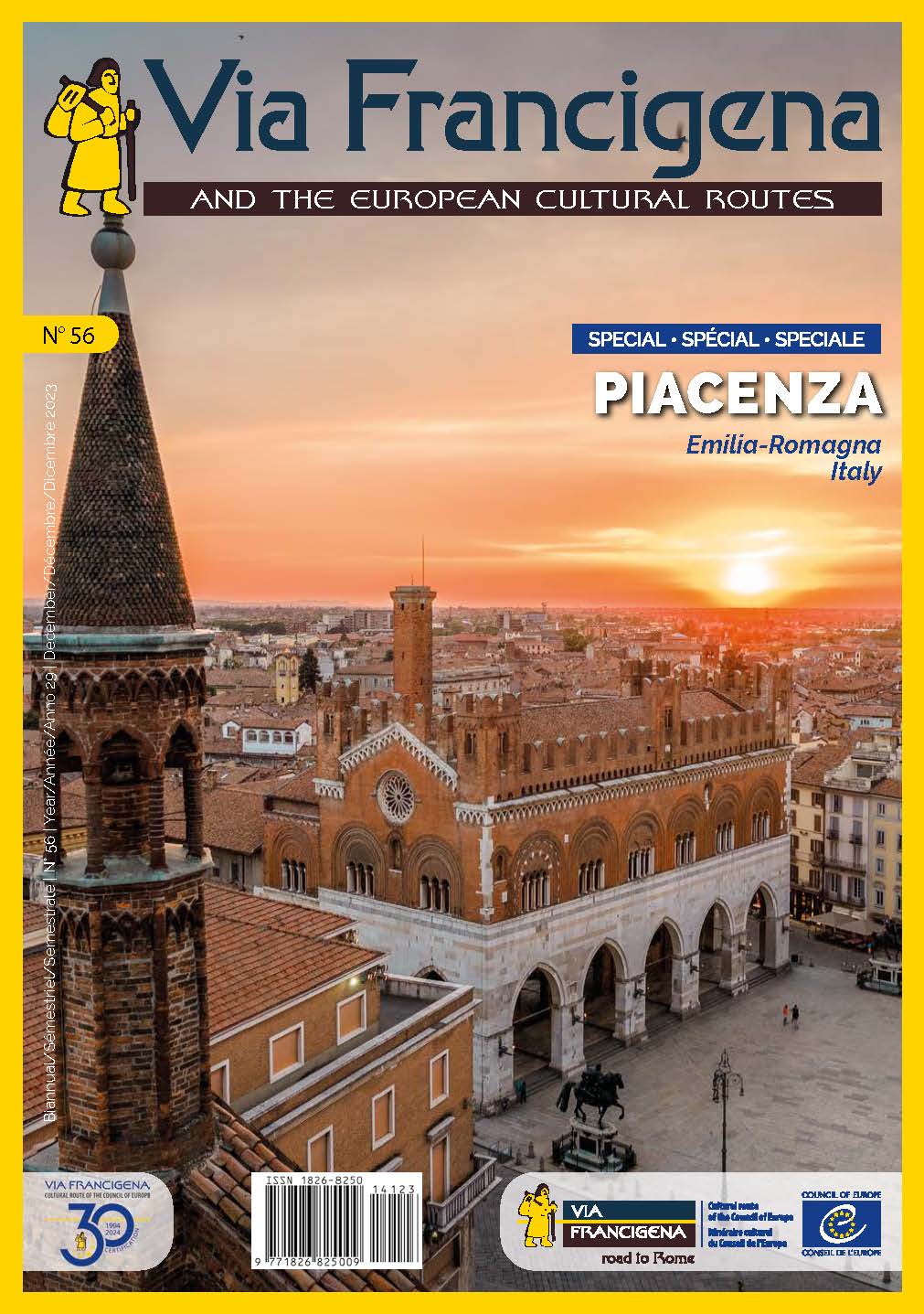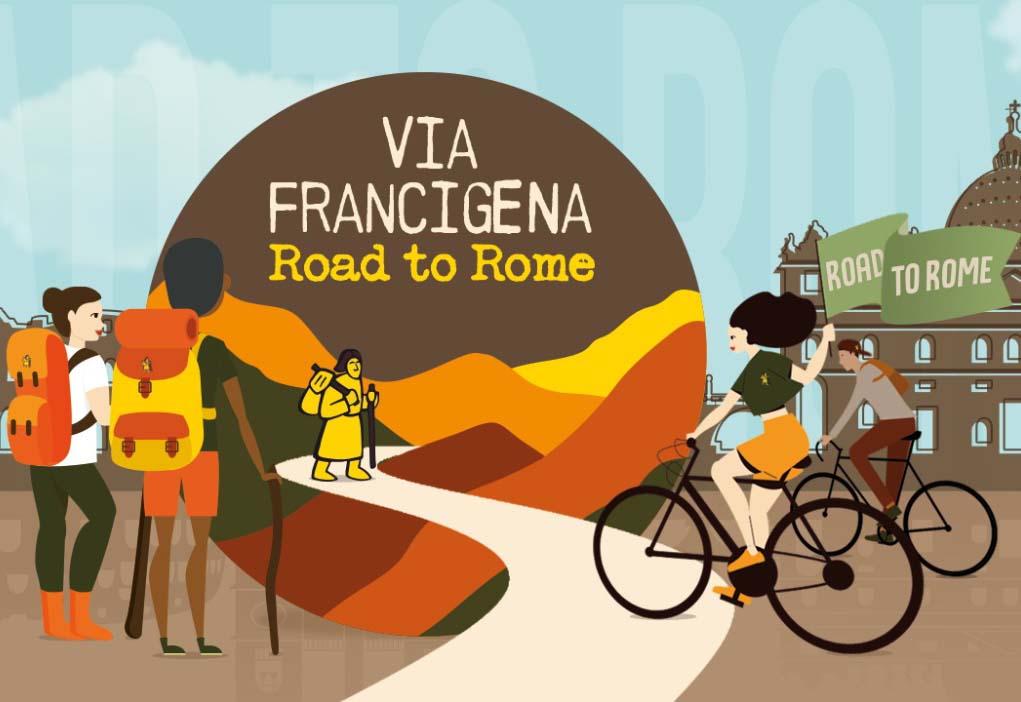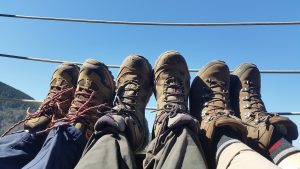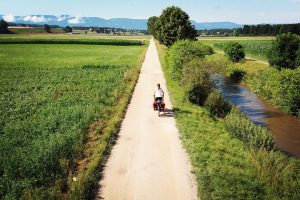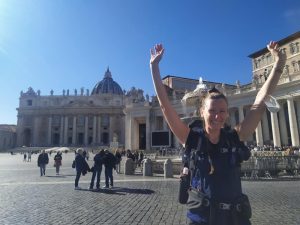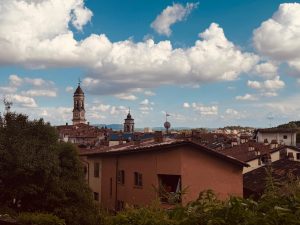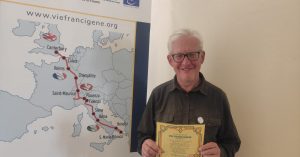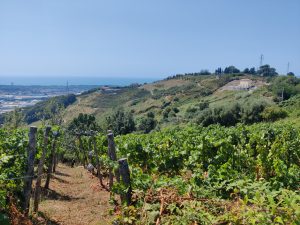What does the CPR do and who are we?
I joined the Confraternity of Pilgrims to Rome (CPR) shortly after walking the Via Francigena in 2017, I found them an interesting and very welcoming bunch.
The CPR is a UK-based charity serving the global Anglophone community to inform, encourage and assist those making a pilgrimage to Rome on foot or by bicycle most often on the Via Francigena: https://pilgrimstorome.org.uk/
The CPR has continued to evolve and change since its inception in 2006. I really like the fact that it remains a secular organisation, which we run as a group of volunteers and delivering many of our services free of charge.
We derive our income from membership subscriptions as well as through fundraising initiatives. Longer term I would like to see an expansion of our offering to supporters.
Why local associations are important across the length of the route
Simply put, local groups are the real experts with boots on the ground, who can tell you what is happening and why; where to find accommodation; or advise on a better route when the official one is not suitable.
I have found local associations often have the networks to make things happen, for example, the establishment of rest points, creation of new accommodation, art to inspire, repair waymarking, and to meet and greet travellers.
At the CPR I believe we are best placed to lobby and exert pressure; for example, when the main ferry company, P&O, which operates between UK and France, ceased its foot-passenger services, the Confraternity was straight in there. Likewise, locally-based individuals will know which levers to pull to make change happen.
The CPR, like many local associations faces the daily problem of the shortage of money, and, of course, too few volunteers to deliver all the necessary work needed.
Governance and management arrangements will vary from jurisdiction to jurisdiction. In England, for example, we have chosen to convert the CPR into a registered charity – a concept familiar to local people, and one that is generally trusted. I have been actively engaged in the not-for-profit sector since 1986, and understand the importance of our role to the Via Francigena.
As chair of the board of the Confraternity, I am alive to the legal responsibilities and duties, that we have to undertake, day after day. At some future point, funds permitting, I hope we might be in a position to recruit a paid staffer.
The importance of the start line of Canterbury Cathedral
The original Via Francigena was said to start in Canterbury and finish in Rome, which is why the zero-kilometre stone was laid so close to the cathedral doors. The growing number of variants as well as extensions, e.g. the Via Francigena del Sud, do not detract from the historically important starting point of Canterbury and finish line in Rome. The city has been the seat of English Christianity for some 1600 years, and through the martyrdom on Thomas Becket in 1170, it has developed a deep pedigree in pilgrimage, and a broad experience of providing services for pilgrims over many centuries.
While only a small city, Canterbury is unique in many ways. It was one of the four original capitals of Roman Britain, and unlike its sister, Winchester, it has retained many of its historic features. The city is old, beautiful, and very well preserved – a magnet for visitors, whether pilgrim or tourist.
A Via Francigena start point in London
Canterbury will always be the home of the zero-stone, however, for travellers from around the world, the ability to begin their pilgrimage on foot from within the UK capital will be seen as an extra advantage, a bonus of sorts. The current route from Canterbury to Dover covers around 31 km, which most people manage in a day, whereas starting in central London, will mean that the UK leg will grow by an extra 140 km. It will soon be possible to walk along the Francigena Britannica for a whole week instead of just one day.
There are many plans to improve the look and feel of the existing route, which we hope to also adopt for the 140 km starting from London.
There are still many challenges in establishing a new route, such as differing styles of waymarking currently being used, accommodation, and of course, the biggest hurdle for me and indeed, any international audience, is having to deal with English cuisine, but then again, the beer here is pretty good!
Reasons to start your Via Francigena experience in the UK
- Almost all foreigners setting out from Canterbury travel to the UK via London. Many British pilgrims walking the Via Francigena like to start from their homes, and their routes often take them via London. Geoffrey Chaucer, our great 15th century poet, had his imaginary but very realistic pilgrims set out on their journey to Canterbury from London.
- Despite growing up as a migrant child in post-war UK, I continue to find that Britain is widely regarded as a tolerant and peaceful place to visit, and despite Brexit, many of us still consider ourselves as Europeans.
- London, my home for over 40 years, is one of the safest global cities on the planet, a lot of fun, and a good place to buy what you need for your long journey across Europe.
- Whilst accommodation is generally a little more expensive in the UK, it is very easy to find and to book, when using the right platforms and apps. I am not a fan of hotels and for now at least, there is too little specialist, pilgrim accommodation available.
- The current stretch is well waymarked and very safe. This year sees the establishment of numerous art works along the Canterbury-Dover stretch.
- The town of Dover has many plans in place to make itself a real point of destination and not just somewhere to pick up the ferry to France; indeed, this coming September it will play a big role in the delivery of this year’s Pilgrim Festival, which I am coordinating.
- I love the topography and landscape of south-east England; it is gentle, green, and lush. I find it both aesthetically pleasing, and really enjoy its abundant, and in some ways, very prosaic, wildlife.




